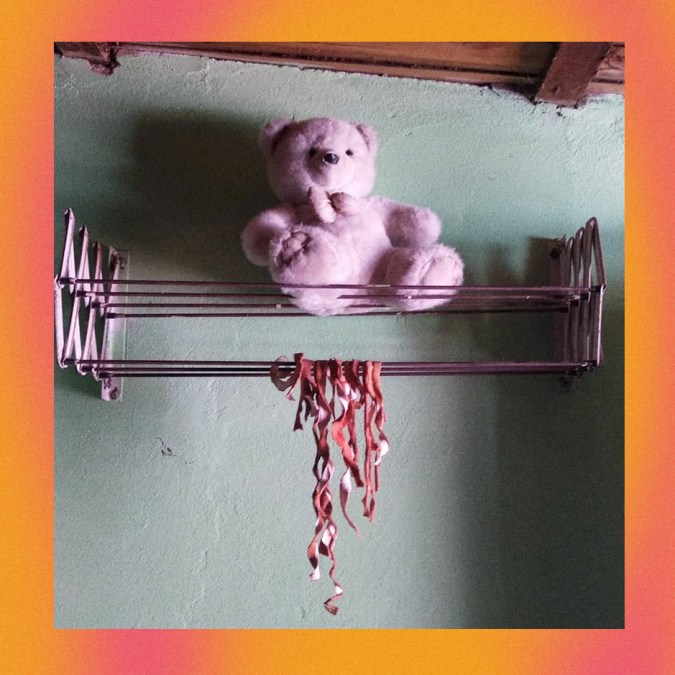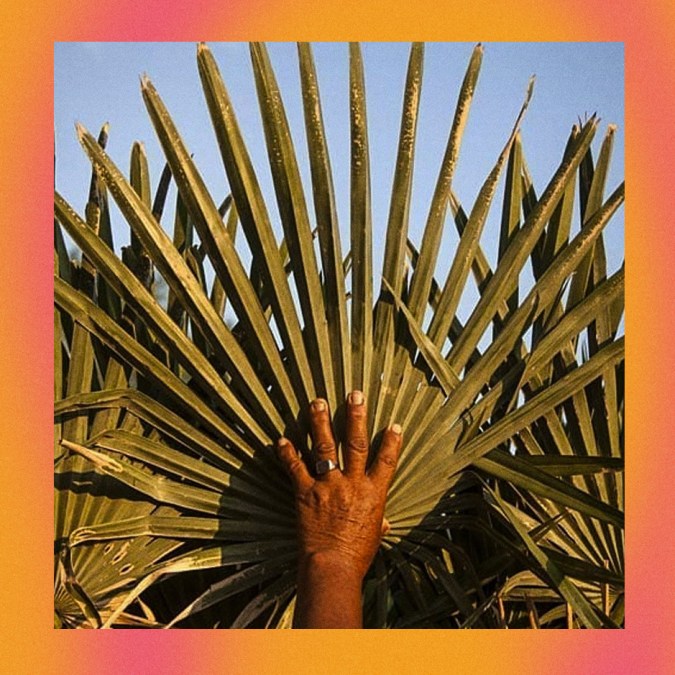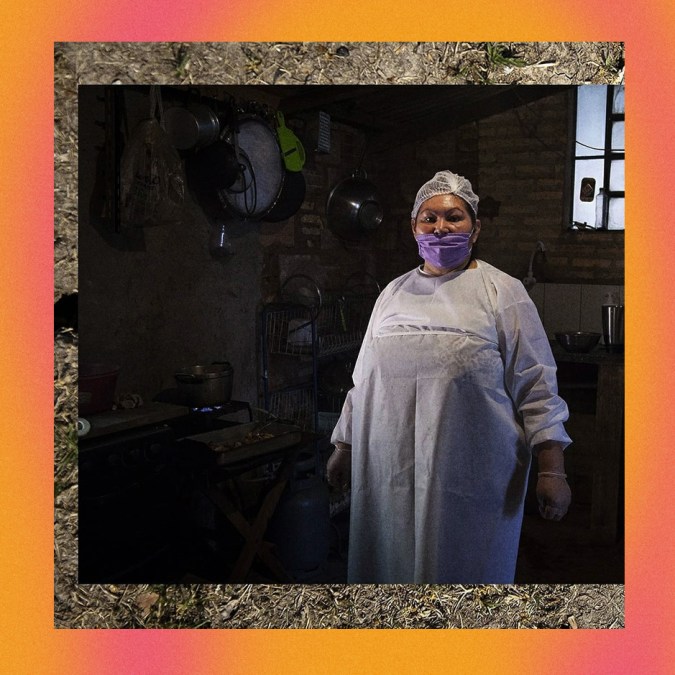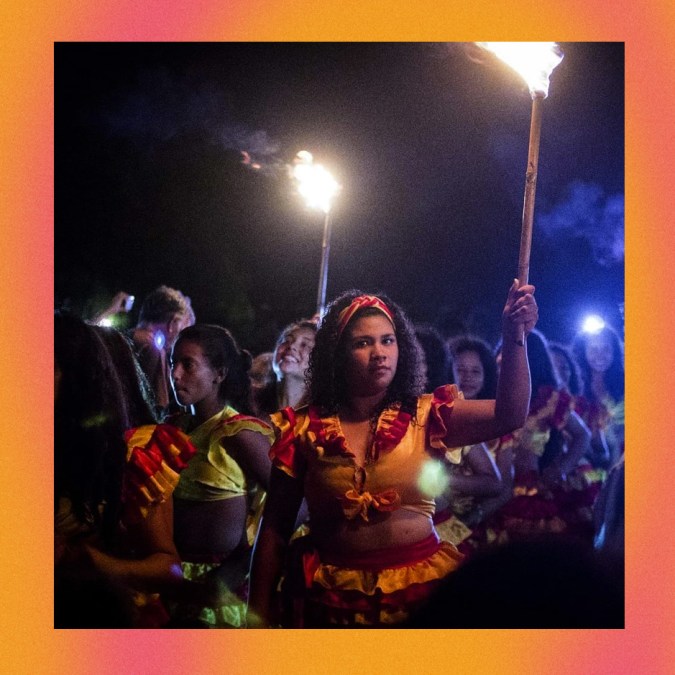Afro-Paraguayans make up about 1% of Paraguay’s population. Photographer Mayeli Villalba is known for her documentation of the Kamba Cua community along with Paraguayos who, like her, have always been told they “didn’t look Paraguayan” but did not grow up in a family that identified as Black.
“I was never taught about our existence at any moment during formal education, so I decided to go out and find my people,” she told Foto Femme United. The 34-year-old artist photographed her fellow afro-Paraguayans at the International Women’s Day March, for the Latin American feminist photography collective, Ruda, and continues to do so in her long-standing portraiture work.
But how does an artist who seeks to make the Black community visible uphold her practice during a crisis that prevents people from coming together?
While quarantining in her mother’s home, Villalba turned her lens towards the earth beneath her feet, a ravaged yet fertile substance of Paraguayan resistance. Through contemplating the soil of a nation that so often denies her belonging, she discovered new ways to trace her roots.

Across her work, Villalba’s courageous questioning of her homeland presents the viewer with an embodiment of simultaneous pride and pain. Looking at her photographs calls James Baldwin to mind. “I love America more than any other country in the world, and, exactly for this reason,” he wrote, “I insist on the right to criticize her perpetually.”
In this Creating in Crisis conversation, Villalba spoke with us about the joy of harvesting your own food, Afro-Latinidad, and collaborations with compañeras from quarantine. This interview was translated and lightly edited for clarity.
You’re a founding member of the Ruda Collective, and there are so many great profiles (including one in Remezcla) about the collective, but there aren’t many about you as an individual artist! So, where does your story as a photographer begin?

Since I was a girl, I always had a little automatic analog camera with me. It was really my family’s camera, but I became the one in charge of taking pictures. My friends and I eventually founded a counterculture media platform called La Cigarra, named after that little bug that always sings in the fall. It was an alternative media site, and we’d cover news that the mainstream media didn’t mention like protests or injustice from the state. I was working on photography and videos for them, and I decided I wanted to do it professionally…Now, I work with international media institutions and NGOs here either as a photographer or cinematographer.

Do you work with different mindsets when approaching your photojournalism and approaching your more personal art?
It’s a bit of both. When I go out to take photographs, I can’t leave my feminist or anti-racist perspective aside because they’re identities that you build inside yourself that can’t be disconnected in certain situations. I try to bring what was asked of me while incorporating my ideology. I aim to not repeat this “Western” narrative that is so machista and racist because those are mainstream visual references. Making something different requires being attentive all the time because if not you can easily fall into these stereotypes. Also, if you’re covering an event, you have maybe a day to do what you can. However, when you’re doing a personal, long term project, you can let yourself make mistakes and come back to it tomorrow or in a month.

Much of what outsiders know about Paraguay is a fight for land in the face of mega agro-business coming from larger neighboring countries like Brazil or Argentina, but I love that your work shows a relationship with land to be one of intimate resistance. Your photographs often speak of plants’ medicinal properties or conserve something as simple as a plate of yucca cocida in a way that evokes warmth. Has your process of photographing the land changed in quarantine?
In Paraguay, the biggest social conflicts have always been related to fighting for our land. In fact, only about 2% of the population owns around 85% of the farmable land. Every day, the campesinos who fight to preserve their land, experience evictions, murders, and persecution from landowners in the soy business. We have such fertile land, but most of what we eat is imported because the arable land is used for soy that they export. Growing soy alone has displaced many communities because it destroys the natural diversity of forests, artificially dries upstreams, and kills animals.
I grew up in Asunción, the capital, but my mother has been living in a town called Nemby for about 20 years now. People like me are the first generation to grow up in the city …so we still have a strong connection with that campesina culture. Now, with the crisis, the amount of people who have started huertas is astoundingly beautiful. My mom and I started a huerta in her home. She has campesino roots but moved to the city when she was 15. We kept having discussions about what I’d read online versus what she’d know or sense was best from her experience. We also bonded with our neighbors who had started their own huertas. We would trade seeds and plantines. Someone would grow tons of tomatoes, they’d give you some, and then you’d share a bit of lettuce. You feel a real bond with the earth through eating what you yourself have grown.

There’s a very interactive and social perspective in your portraiture work. Obviously, you don’t need to be touching your subject to create a connection, but how has social distancing affected how you establish trust with your subjects?
I usually try to spend as much time as possible with people to create more trust and respect their space as well. In this case, I took a series of portraits of people in my mother’s neighborhood in their gardens for a project we’re doing with the Ruda Collective called “No Es Una Cadena” (This is Not a Chain). Speaking with my subjects about their work on their land made us feel close to one another. I’d tell them, ‘I also have a huerta that I am building with my mamá, and yours is so beautiful.’ People are filled with an almost inexplicable pride from something as simple as growing their own crops in their backyard. I also think that because of our strong campesino culture, people genuinely enjoy planting and harvesting. It’s not just out of necessity.

You’ve mentioned that you’re one of the only members of your family who is proud of their Blackness. Have you taken portraits of your family for your Afro-Paraguayos project? How did they feel about you unearthing the family history and identity?

I was the first generation in my family to go to university. My ancestors were just trying to get by. My academic experience gave me more tools to understand my position in the world. I could learn how patriarchy and racism take root in me. If I had never learned that, I would have thought that there was something wrong with me personally.
There was some discomfort at the beginning with my family because racism makes you reject your own identity. My family looked down upon any bodily signs of Blackness. Luckily, I have beautiful relationships with all of my aunts, and my mom has plenty of siblings who are all very close. Even if this topic gets uncomfortable for us, there’s never an aggressive reaction because we have such a strong bond to begin with. They also liked having their portrait taken, except for my mom. I had to work with her for many years before she let me take her portrait. Then, she began to understand why I wanted to take photos of her because she’s such an important reflection for me in this deep exploration of our identity. After I explained it to her, she stopped being so shy.
It’s usually difficult for people to look at themselves in general, but it can be especially hard for Black women because of racism. Today, it’s so easy to take my mom’s picture. In quarantine, she’d come with me when I went to take photos of her neighbors’ huertas and say, “Hey, take my picture here.”
Do you think your portraiture has helped your subjects have more self-confidence?
Yes, I’ve noticed that a lot with the people I’ve met through my Afro-Paraguayan project. I can’t just walk up to someone and say, ‘Hey, you look Black to me,’ because no one wants to be labeled with something that is viewed negatively because of racism. For a lot of the people I interview, I’m the first person who has told them that they might be Afro-descendant. I present my project as portraiture of people who share features with me—whether it is curly hair or the shapes of our noses. Introducing someone to their Black identity opens up a huge door for questioning, and we treat it as a family story because I don’t want it to be superficial. There’s a real need for a Black scene here, where more people speak about their lives as a Black person.
Paraguay has been celebrated for how well it controlled the virus, but you’ve made some observations in your Instagram captions about how there’s still a great deal of inequality and elitism in the healthcare system. It’s important to talk about class in terms of COVID-19’s impact because there is this dangerous discourse of, ‘This virus does not discriminate,’ when in reality Black and Brown low-income folks are the most affected. Has that rhetoric been present in Paraguay at all? How did you try to introduce discussions of class to your documentation of the crisis?
Where my mom and I were quarantined has historically been a community for migrant campesinos and their children. Most of her neighbors are lower-income domestic and construction workers. Being a migrant campesino means that you are inheriting historical structural poverty that is deeply rooted in your identity as well.
When the lockdown was more strictly controlled, police broke up a soup kitchen that was serving hungry people in a peripheral, very impoverished neighborhood of Asunción. That same week, a multimillionaire couple got married and posted on all of their social media. Looking at the contrast between police repression of a soup kitchen and a wedding in a mansion with all of these rich people wearing designer face masks was insane. I live near the soup kitchen, but I couldn’t travel to photograph because I was quarantined outside of the city during the lockdown. So, when I took over the Ruda account, I compiled some images I found.

You’ve described the “everyday.paraguay” account as a collective diary. How have you challenged yourself creatively while also doing so with your compañer@s en these other collectives? Especially considering you encourage amateur cell phone photography from folks on everyday.paraguay. Being a mentor for other artists, what are some of the shared pandemic challenges for photographers who can’t go out to take pictures as easily?
Early on, we told our followers that we wanted to share what was happening in Paraguay from quarantine. There’s this stereotype of photojournalism where you need to go somewhere exotic in order to tell a story, and there’s so much colonialism with Europeans going to Africa or South America to discover ‘the jungle’. We always tell photographers that you don’t need to leave your kitchen or your bedroom to tell a story. So we were really challenging ourselves to look at what was in our proximity and ask the people around us to participate.
Has Paraguay had a greater reckoning regarding their Black history with the international Black Lives Matter protests?
Yes, definitely. Five years ago, it was much harder to talk about Blackness in Paraguay Now, the anti-racism work many of us have been doing for a while is getting more visibility. Race is finally being placed in dominant media outlets. There’s a magazine called Pausa that usually reviews beauty products or follows V.I.P. culture, and they put me on the cover with some other afro-paraguayas. But, we don’t know for how long this will be on the front page, so nothing has really been resolved.
There have been so many moments across my life where my Paraguayan identity has been denied because of my Black body. Talking about injustice isn’t always viewed as artistically or aesthetically viable. It would be way easier and friendlier to make everything seem lovely with unicorns and ponies. Addressing issues that are uncomfortable for other people can set you up for rejection, and not everyone is prepared to deal with that discomfort. Of course I’d rather be quiet sometimes. You can get tired.
You’ve said, “Afro-paraguayos are more than a dance or music that appears in artistic events when we’re invited.” So, how do you balance celebrating Black culture through documenting Kamba Cua while resisting the tendency to reduce afro-paraguayan culture to folkloric music?
I’m not a part of the Kamba Cua community that has always self-identified as Black, but I’m close with them from having worked with them. They carry on a tradition of music and dance that is central to many Afro-diaspora communities. It’s an important expression of identity, and it’s a political tool because it’s what makes them so recognizable. Their dance is the primary reference to Blackness that we have in Paraguay, so it’s become a central element of our shared identity.
It’s problematic that they only get the stage once a year as if they were nothing more than a folkloric event and not people who deserve human rights, who withstand structural racism, and whose ancestors were enslaved. It wasn’t bad luck or an accident. The state upheld slavery through public policies. They give us a space to dance, but they do nothing to address exclusion from education or healthcare.

Now that so many industries are reckoning with their racism, do you think that as a Black woman photographer your work will always be viewed as inherently political? How do you feel about that?
I believe that all stereotypes can be damaging at any given moment. It can be hurtful when someone tries to pigeonhole you in whatever way. Identity shouldn’t be viewed as something so static because we’re constantly changing. We need to fight to liberate ourselves from stereotypes and from our prejudice of others as well. If there’s a project with a compelling political point that can contribute to debates on issues as screwed up as racism, that’s good, but our art should be viewed as more than that.
How can folks support your work from afar?
Seeing more marginalized people making artwork would make me very happy. It’s also important to recognize the structural issues there that make it difficult for us to access the art world in general. There’s a tendency in photography to make issues seem de moda. Photographers need to make sure they’re not taking space away from Black artists telling their own Black narratives. It’s exactly what happened when women’s issues were ‘trendy.’ Suddenly, there were all of these cis-men making art about women. White feminists called that out, but white women don’t realize that they’re doing the exact same thing in Black spaces now. Just because there are more women doesn’t mean that they’re representing all women because they’re usually white. There are tons of white photographers telling stories about Blackness, and this only widens the divide because we’re already such a minority in photography. There needs to be reflection on daily racism everyday, not just on the day of the conference. We need to identify the everyday ways that we perpetuate racism, what they call microaggressions, but I do not agree with the classification “micro.” My mother, my abuela faced some of the same issues I face too. We experience lifelong barriers.




